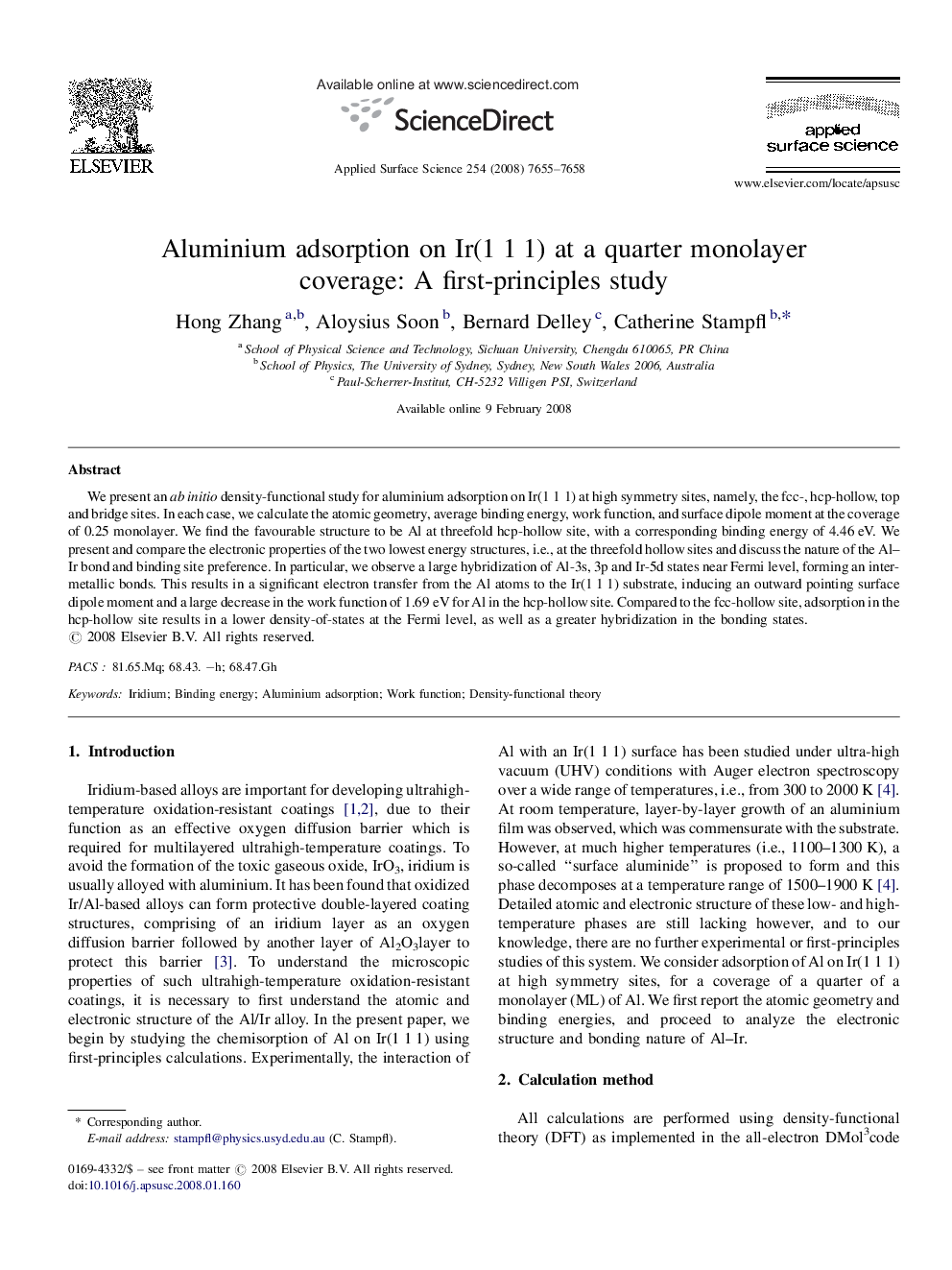| Article ID | Journal | Published Year | Pages | File Type |
|---|---|---|---|---|
| 5360739 | Applied Surface Science | 2008 | 4 Pages |
Abstract
We present an ab initio density-functional study for aluminium adsorption on Ir(1Â 1Â 1) at high symmetry sites, namely, the fcc-, hcp-hollow, top and bridge sites. In each case, we calculate the atomic geometry, average binding energy, work function, and surface dipole moment at the coverage of 0.25 monolayer. We find the favourable structure to be Al at threefold hcp-hollow site, with a corresponding binding energy of 4.46Â eV. We present and compare the electronic properties of the two lowest energy structures, i.e., at the threefold hollow sites and discuss the nature of the Al-Ir bond and binding site preference. In particular, we observe a large hybridization of Al-3s, 3p and Ir-5d states near Fermi level, forming an inter-metallic bonds. This results in a significant electron transfer from the Al atoms to the Ir(1Â 1Â 1) substrate, inducing an outward pointing surface dipole moment and a large decrease in the work function of 1.69Â eV for Al in the hcp-hollow site. Compared to the fcc-hollow site, adsorption in the hcp-hollow site results in a lower density-of-states at the Fermi level, as well as a greater hybridization in the bonding states.
Related Topics
Physical Sciences and Engineering
Chemistry
Physical and Theoretical Chemistry
Authors
Hong Zhang, Aloysius Soon, Bernard Delley, Catherine Stampfl,
